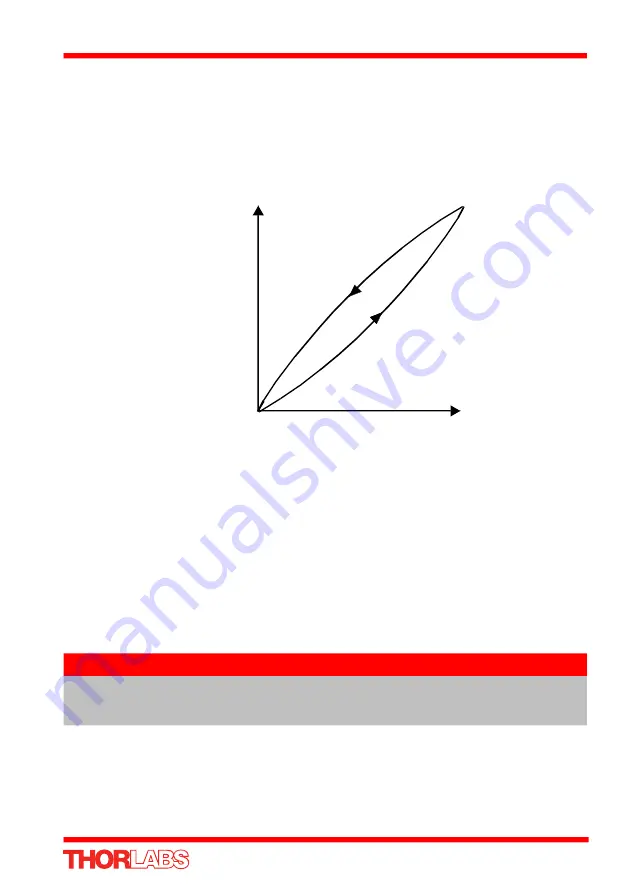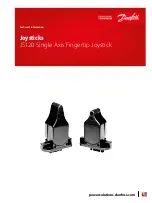
63
LPS710E Long Travel Piezo Stage and Controller
E.1.2 Hysteresis
Despite the very high resolution of piezoelectric actuators, an inherent problem is the
significant amount of hysteresis they exhibit, (i.e., the tendency of the actuator to
reach a final position that lags behind the demand position).
If a cyclic voltage is applied to the actuator the positions reached on the upward
sweep are smaller than those achieved on the downward sweep. If position is plotted
against voltage, the graph describes a hysteresis loop – see Fig. E.2.
Fig. E.2 Piezo-electric hysteresis
E.1.3 Position Sensing and Feedback Control
Hysteresis can be eliminated by using a position sensor and feedback loop, i.e., the
sensor measures the position, the circuit subtracts the measured position from the
demand position to get the error, and a proportional-integral feedback loop adjusts the
voltage to the actuator until the error is virtually zero.
Some Thorlabs nanopositioning actuators have position sensing, others do not. The
Piezoelectric control module allows both types to be controlled.
To control an actuator with position sensing, the Piezoelectric control module should
be set to closed-loop
mode. To control an actuator without position sensing, the
Piezoelectric Control module should be set to open-loop mode.
Block diagrams for both modes of operation are shown in Fig. E.1.
Note
An actuator with position sensing can also be driven in open-loop mode
if desired, since the feedback part of the circuit can be switched off. An
advantage of open-loop mode is the greater bandwidth of the system.
voltage
position








































